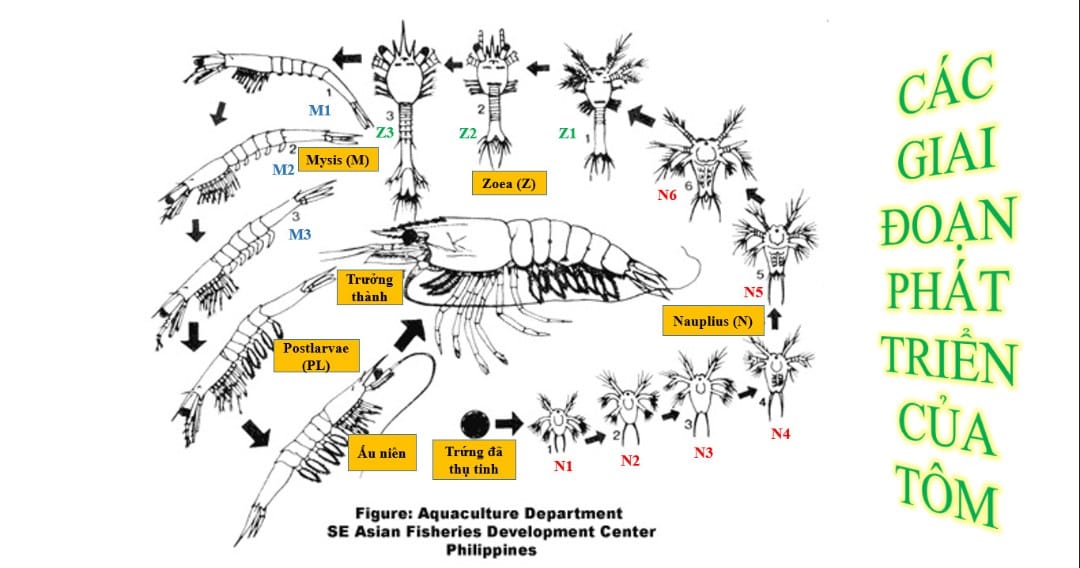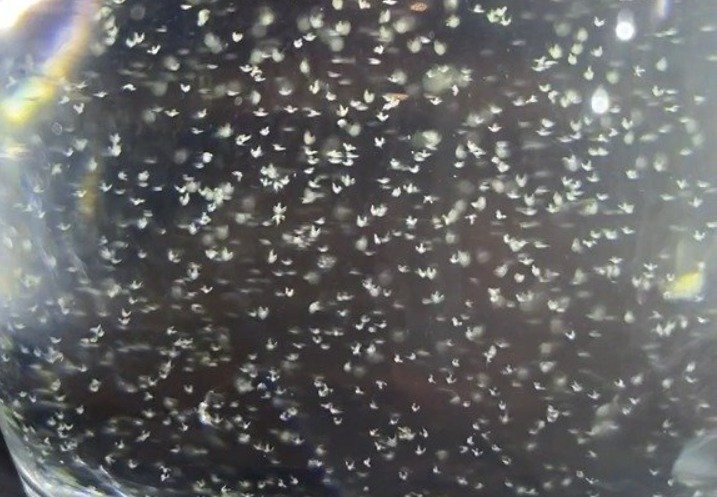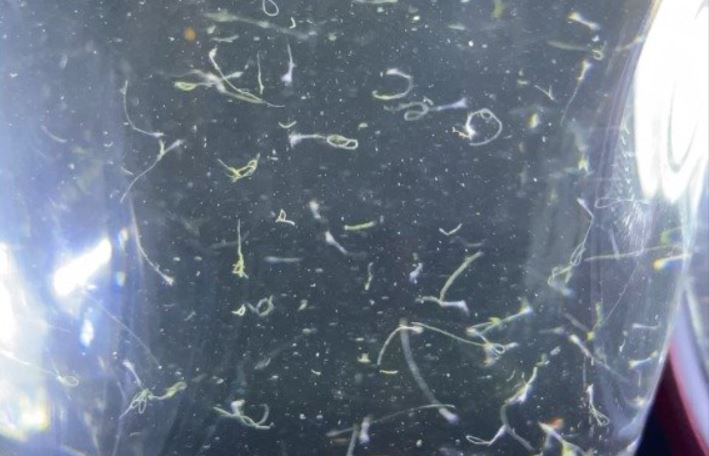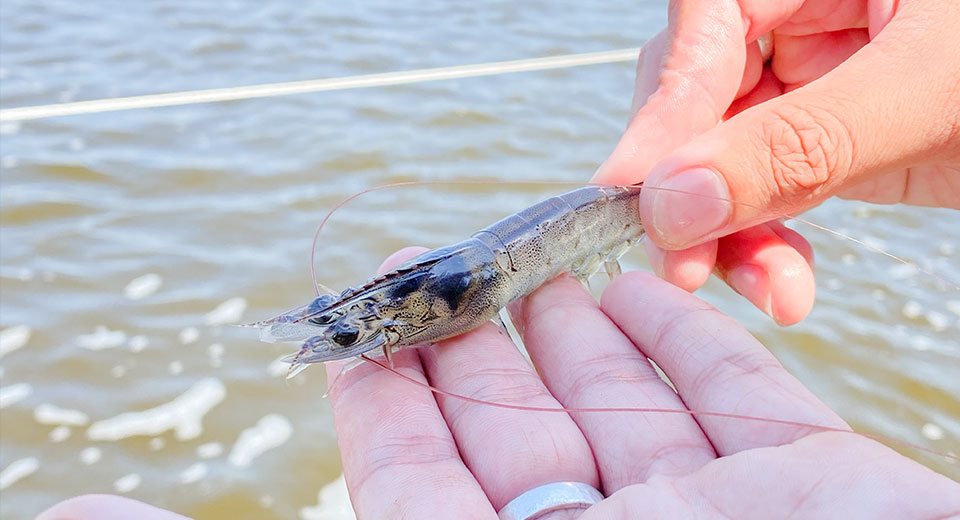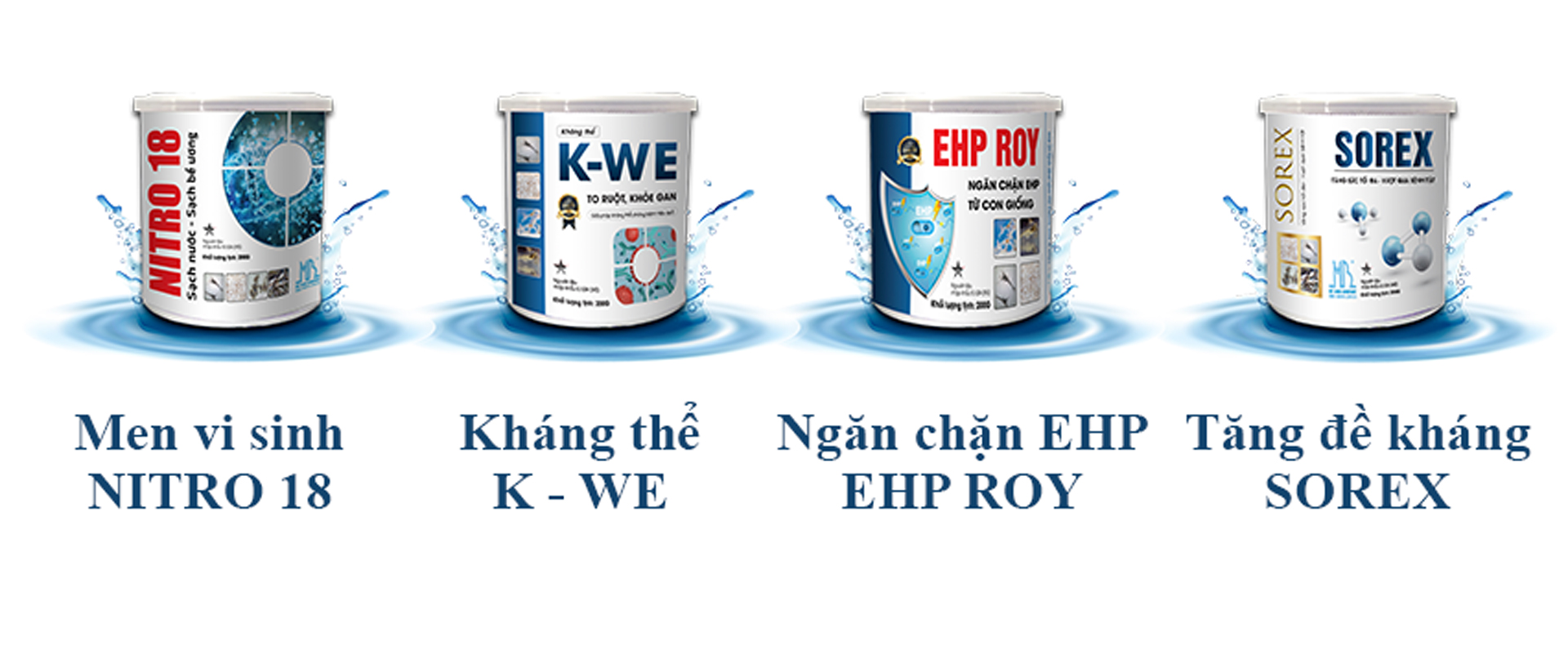Development stages of white leg shrimp (Litopenaeus Vannamei)
White-legged shrimp (Litopenaeus vannamei) is a form of eastern Pacific pandan shrimp that is often caught or raised for food. In nature, shrimp mature, mate, and reproduce in waters 70 meters deep with temperatures of 26-28 degrees Celsius and quite high salinity (35%o). Here we invite you to learn about the development stages of white leg shrimp.
Image: Development stages of white leg shrimp (Litopenaeus Vannamei)
1. Embryonic stage
White leg shrimp usually lay eggs at night from 10 p.m. to 2 a.m. the next morning. When the egg is fertilized, after 12 - 14 hours the egg embryo goes through the stages of development and will hatch into a Nauplius larva.
2. Larval stage Nauplius larvae
- Newly hatched Nauplius larvae are about 0.3 mm long, with 3 pairs of appendages: antennae 1, antennae 2, and upper jaw. There is an eye spot in the middle of the front. Larvae have a floating, sedentary, phototropic behavior and are nourished by stored yolk.
- Nauplius larvae undergo 6 molts (N1- N6). After 1.5 - 2 days, Nauplius larvae develop into Zoea larvae.
Image: N3 stage
Zoea larvae (Z)
- Zoea larvae are filter feeders, their main food is a group of algae with sizes from 3 - 30um. Zoea is strongly phototropic, has a stripe on the back of its tail, and swims forward.
- Zoea consists of 3 sub-stages, each stage lasts about 24 - 28 hours: Zoea_1: About 1mm in size, has a round cephalothorax and an elongated abdomen (a distinguishing point from Nauplius larvae). The appendages and tail spines are developed, the eyes do not yet have stalks.
Zoea_2: Appears with two stalked eyes, a toothed tip, an elongated abdomen, and the first pair of antennae facing forward.
Zoea_3: There are dorsal and ventral spines on the abdominal segments. The first antennae are larger and have more fluff. The thoracic buds appear behind the oral appendages. The most obvious feature is the gastropod (uropod) appearing before the tail.
Image: Zoea 2 Stage
- After 2 - 3 days of development, Zoea larvae transform into Mysis larvae.
Mysis larvae (M)
- Mysis larvae gradually switch to feeding on plankton, swimming on their back and jerking forward.
- Similar to Zoea, Mysis larvae also go through 3 sub-stages and each stage lasts about 24 - 28 hours.
Mysis_1: Body elongated, thoracic legs developed, telson appears, no gastrocnemius legs yet. Mysis_2: There are gastropod buds but not yet segmented.
Mysis_3: The gastropod grows twice as long as Mysis 2, the gastropod has 2 segments. - It takes about 3 - 3.5 days for Mysis larvae to develop into Postlarvae.
Postlarvae (PL)
- Postlarvae are post-larvae or fry shrimp, they have a similar shape to adult shrimp. The first postlarvae are about 4.5mm long, the abdominal legs have many hairs.
- Living habits of Postlarvae: in the early stages, some still swim in the water column, and most begin to live on the bottom. From PL5, shrimp mainly live on the bottom.
Image: Shrimp in the Postlarvae stage
3. Childhood, adolescence to adulthood
- Shrimp from PL4 onwards are classified as juvenile stage. At this time, the shrimp's gill system is complete, they begin to crawl with their feet and swim with their swimming feet. Body pigmentation continues to develop.
- By the teenage stage, the external genitalia of male shrimp (Petasma) and female shrimp (Thelycum) are formed but are not complete.
- When shrimp enter the stage of adulthood, the external genitalia are complete, male shrimp begin to have sperm in their seminal vesicles and female shrimp participate in sex for the first time. The phenomenon of uneven growth between the two sexes is evident.
4. Adult stage
- At this stage, shrimp is capable of participating in the reproductive process. They tend to live far from shore, in places with high clarity and stable salinity.
5. Products for shrimp seeds
Image: (left side) NITRO 18 Probiotics - K-WE antibiotics - EHP ROY - SOREX increase resistance for shrimp seeds
- SOREX | Increase maximum strength, help shrimp seeds overcome diseases
- NITRO 18 | Clean water, clean shrimp breeding tanks
- K-WE | Good for liver and intestines for shrimp seed
- EHP ROY | Prevent EHP from breeding stock
Contact us now: at WhatsApp: +84939881532 (Mrs. Camryn Ho) or leave a comment below to receive more advice about hatchery and all of our products for shrimp seeds. We wish farmers had successful shrimp and fish seasons and high prices!
.......................................................................................
MY BINH EXPORT-IMPORT TRADING LIMITED COMPANY
Main Office: 49/11B, Tran Hoang Na Street, Hung Loi Ward, Ninh Kieu District, Can Tho City, Viet Nam.
Factory Address: 28T, Nguyen Van Quy Street, Phu Thu Ward, Cai Rang District, Can Tho City, Viet Nam.
Hotline: +84911383533 or +84983173322
Website: https://mybinh.com.vn
Email: mbtrade9@gmail.com


